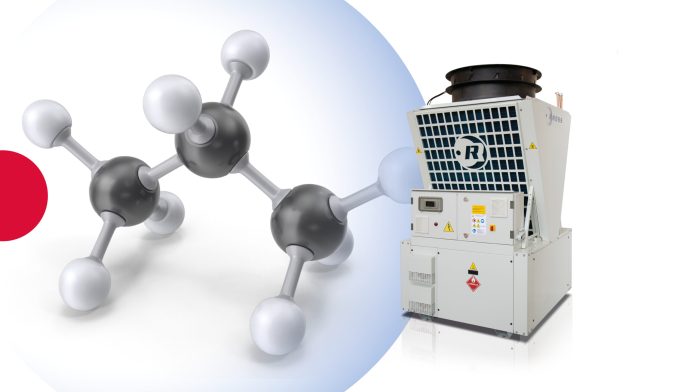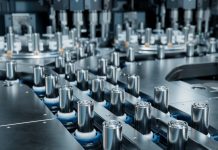Roberto Mallozzi from Klima-Therm shares practical insights on delivering leading large-scale heat pump systems in public sector buildings to maximise energy efficiency, enhance service outcomes, and minimise carbon emissions plus operational costs
Maintenance backlogs across public sector buildings prevent essential services from being effectively delivered while acting as a barrier to meeting environmental targets. Heat pumps are part of the solution, but with technology evolving rapidly, decision-makers need guidance on maximising their investment.
Drawing on decades of experience delivering leading large-scale heat pump systems, I will share practical insights on how public sector buildings can upgrade heating systems to maximise energy efficiency and service outcomes while minimising carbon emissions and operational costs.
A recent National Audit Office (NAO) report estimated maintenance backlogs across public sector buildings to be at least £49 billion. Ministry of Defence buildings, schools and NHS facilities account for 88% of this burden, each with backlogs exceeding £10 billion. (1) Over 1.5 million children attend schools requiring major upgrades, with 729,000 in buildings deemed unsafe or dilapidated by government or local authorities.
Decision-makers face pressure on multiple fronts. Urgent remediation is required to improve service outcomes in critical areas, such as education and healthcare. If upgrades are deferred, the Cabinet Office has estimated that costs could rise by 50% in two to four years. And finally, those operating in the public sector must meet carbon reduction targets. Funding is available under the Public Sector Decarbonisation Scheme, which aims to reduce building emissions by 75% by 2037, compared to 2017 levels. (2)
Heat pumps for government buildings
In 2024, renewable technologies, including wind, solar and biomass, generated 45% of UK power, with nuclear taking low carbon energy generation to a record-breaking 58%. The increasingly ‘green’ profile of the National Grid makes for a compelling argument for heat pumps as an environmentally responsible electric heating choice for public sector buildings.
Heat pumps deliver impressive energy efficiency, lower running costs than alternatives, reduced carbon emissions and decreased maintenance requirements compared to combustion-based systems. However, realising these benefits depends entirely on proper specification, installation and maintenance.
At Klima-Therm, we have extensive experience delivering large-scale heat pump systems across diverse applications, including universities and college campuses, medical research facilities and listed buildings. What lessons have we learned from supplying what we believe to be the largest range of heat pumps available in the UK?
Choose the right heat pump for your application
Public buildings have diverse requirements, from healthcare facilities needing consistent hot water to educational buildings with varying occupancy patterns. At Klima-Therm, we supply an extensive range of heat pump solutions specifically designed to meet these varied needs:
- The POKER290 from Rhoss is a ground-breaking new range of high-temperature air-cooled reversible propane (R290) heat pumps that delivers exceptionally high-water temperatures and outstanding efficiency (A Class CoP, SCoP of 3.2 at medium temperature and 3.81 at low temperature). Its modular design expands capacity from 48kW to 190kW by connecting up to four units, making it ideal for phased retrofits in schools, universities, healthcare facilities and leisure centres.
- The UniPACK-P and UniPACK-P EXP series offer flexible heating solutions with cooling capacities from 50kW to 160kW. These propane-based systems produce hot water up to 72°C even with external air temperatures down to -12°C and contacts for smart grid and solar photovoltaic integration, offering exceptional operation all year round.
- For buildings requiring very high-temperature domestic hot water, our Enerblue HP90 CO2 heat pump range delivers water temperatures up to 90°C with external temperatures as low as -20°C. With heating capacities from 14.5kW to 133.2kW and a CoP of 3.2, it offers significant energy savings for applications requiring a consistent hot water supply.
- The innovative 3DxHP heat pump AHU eliminates defrost cycles entirely, preventing interruptions in thermal output and ensuring consistent comfort in applications such as schools, healthcare facilities and leisure centres.
For sites with concurrent heating and cooling demands, it can be tempting to size for the maximum peak, but this is a bad practice that results in an inefficient and costly operation that shortens the life of the plant. We recommend sizing for the lowest of the two peaks, supplementing with dedicated machines where necessary, and using an approach that optimises energy efficiency, reliability, and capital expenditure.
Natural refrigerants offer future-proofed sustainability
At Klima-Therm, we’ve long advocated for natural refrigerants, particularly propane (R290). Our experience of over 300 propane heat pump installations over the last 15 years has demonstrated that these systems are safe and highly efficient with proper handling.
Natural refrigerants like propane and carbon dioxide (CO2/R744) offer significant environmental advantages with zero ozone depletion potential and minimal global warming impact. For public sector organisations that want to future-proof their heating, these refrigerants provide a sustainable solution that feeds into long-term decarbonisation goals.
For example, the POKER290 range of high-temperature propane heat pumps is ideal for a wide range of public buildings, including schools, universities, hospitals and care homes. Its modular arrangement allows capacity to be increased according to demand, perfect for phased retrofits in the public sector where funding may be released incrementally.
Intelligent controls enhance system performance
Smart controls can transform heat pumps into grid assets while maximising efficiency. For larger public sector estates, implementing advanced control systems like the MTM Multi Technology Manager can optimise the operation of multiple units, ensuring the most efficient units take priority and managing combined heating and cooling loads effectively.
The ability to sequence different types of units – including chillers, heat pumps and polyvalent (4-pipe) systems – provides exceptional flexibility for complex public buildings with diverse heating and cooling requirements.
Choose a total service provider
Public sector decision-makers should seek partners who offer comprehensive services from consultation to ongoing maintenance, protecting the significant financial investment required to refurbish and, in some cases, rebuild public sector buildings.
At Klima-Therm, we offer a total solution approach – from initial consultation, design and specification to installation and preventative maintenance – ensuring public sector buildings achieve optimal performance, energy efficiency and environmental benefits from their heat pump investments.
With the benefit of our extensive experience with large-scale heat pump systems, decision-makers work with us to confidently choose low-carbon heating and cooling solutions that deliver long-term value for buildings and the communities they serve.











